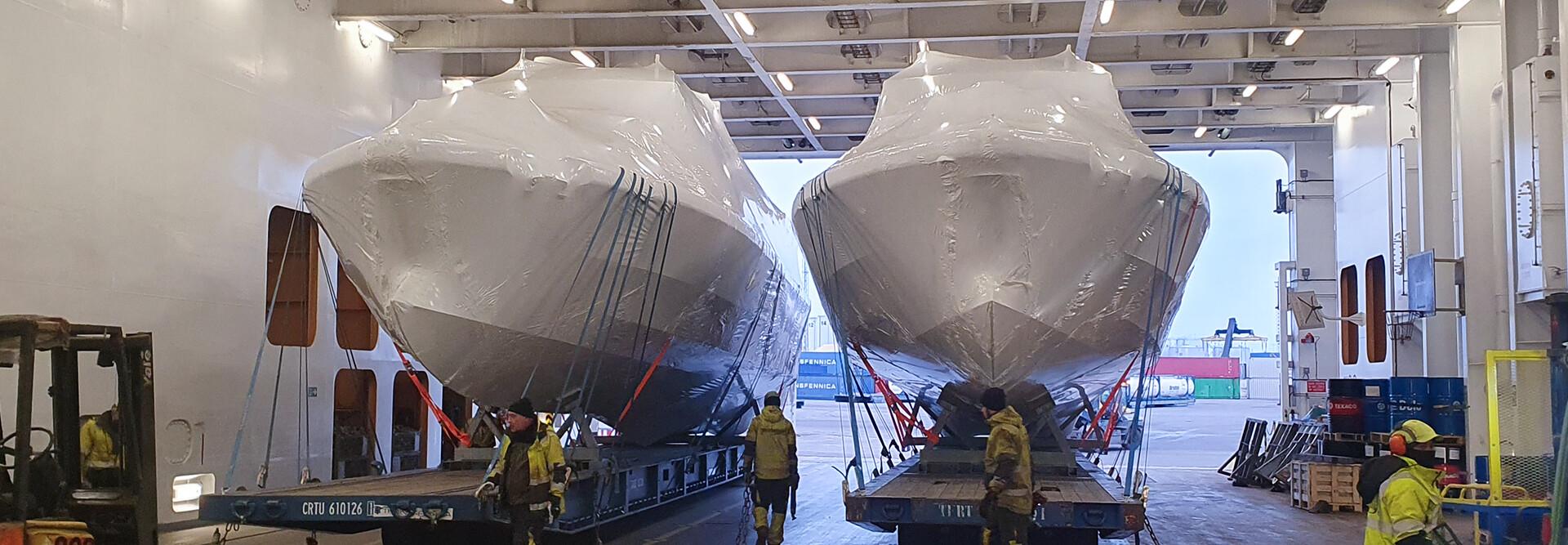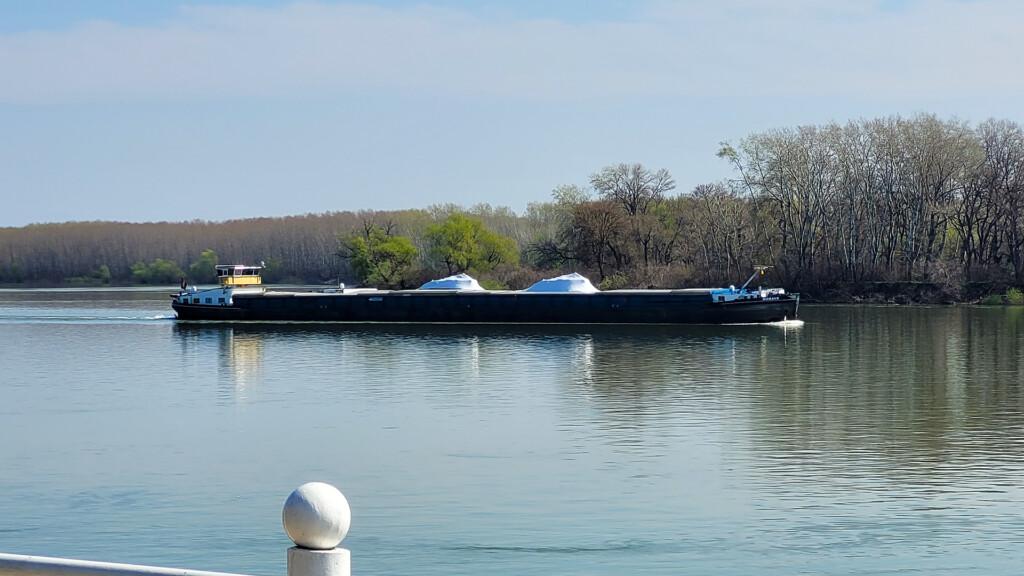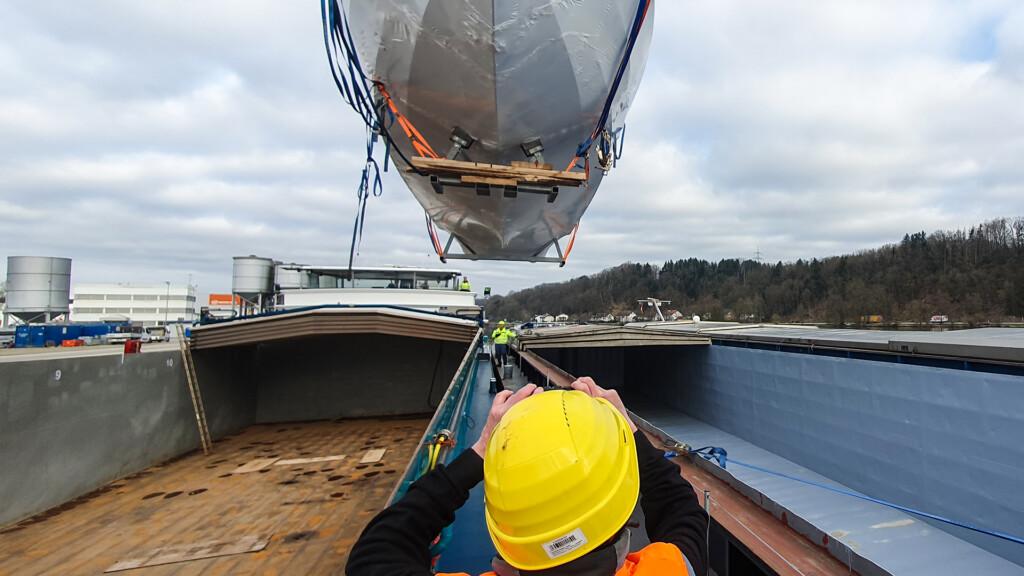
Case Patrol Boats: Transport Across Europe Along Rivers
Jetlogistics received an assignment from a customer who needed to transport two large patrol boats across Europe to Romania. What makes this case exceptional is that the most common route via the Bosphorus could not be used – so an alternative route had to be found. Jetlogistics’ Marko Mäkelä accompanied the transport throughout the journey. “I have to say that in this case, well-planned was indeed half done,” Marko says with a laugh.
Planning, documents and go!
Towards the end of 2023, the client contacted Jetlogistics’ Estonia team regarding the transport of two patrol boats. This was no small operation, as the boats to be transported were large: 18 metres long, 6 metres wide and 7 metres high, including the transport platforms. Boats of this size would not be suitable for land transport, as the size of the boats was comparable to four buses. In addition, the distance to be covered was long: the boats would have to be transported from Estonia to Romania.
The customer was already familiar with Jetlogistics and knew how to be on the move well in advance. It is always positive when a customer is contacted well in advance of the logistics service required, as in this case, for example, the implementation required a great deal of planning and research. Instead of the Bosphorus, another route had to be developed. The chosen solution was to cross Europe via rivers on riverboats.
“When a client asks us for a solution, we go out boldly to find one. And if there is a solution, we’ll find it. This is reflected, for example, in the fact that we also implement solutions that have never been done before.” Marko Mäkelä
“Rarely have we crossed by riverboat, so a lot of research had to be done. Could we get through in terms of permits and would it even be physically possible?” Marko recalls the planning of the transport.
Contact points for planning included shipping companies, ports, freight forwarders and shipping agents. Some of these were partners of Jetlogistics and some were completely new subcontractors. Again, a large and long-standing network of partners was useful in this case, as some of the new subcontractors were found through existing partners.
Once the routes and the necessary documentation were in place and everything showed a green light, it was time to get moving.

Journey Through 12 Countries Along Rivers
The client transported the boats to the harbour, where they were lifted onto transport platforms and from there onto the maves. The first transfer was from Estonia to Finland, where the boats changed from one ship to another. From Finland, the boats continued to Belgium, where the river section began. The boats were lifted aboard a riverboat and transported along the Rhine to Germany, where they were transferred to the next riverboat. The final leg was along the Danube to Romania. In total, the boats passed through 12 countries.
Marko Mäkelä accompanied the boats all the way, making sure that everything went according to plan. The client was kept in touch every day and was kept up to date on the progress of the transport and the journey. There was also a tracking device on the transport which allowed the client to monitor the progress of the boats.
“The carefully done groundwork was a great help during the trip, as all the documentation that was needed was taken care of. The journey did not stop at any checkpoints,” says Mäkelä.

Careful Planning Is the Key to Successful Transport
The riverboat solution proved to be a viable and correct solution for this transport, although it wasn’t the fastest option. In this case, however, the aim was not to race against time but to get the boats safely to their destination. The agreed schedule was well met and the customer was satisfied with the result.
Physically, this type of transport is fairly easy to manage, but the challenge is the documentation involved. The origin and destination of the journey were in Europe, but the chosen route also took the transport outside the EU to Serbia. Leaving the EU brings its challenges, which should be carefully managed as far in advance as possible. This type of transport has reportedly never been carried out before. In this case, well-planned was indeed half done.
“When a client asks us for a solution, we go out boldly to find one. And if there is a solution, we find it. This is reflected, for example, in the fact that we also implement solutions that have never been done before,” promises Mäkelä.

